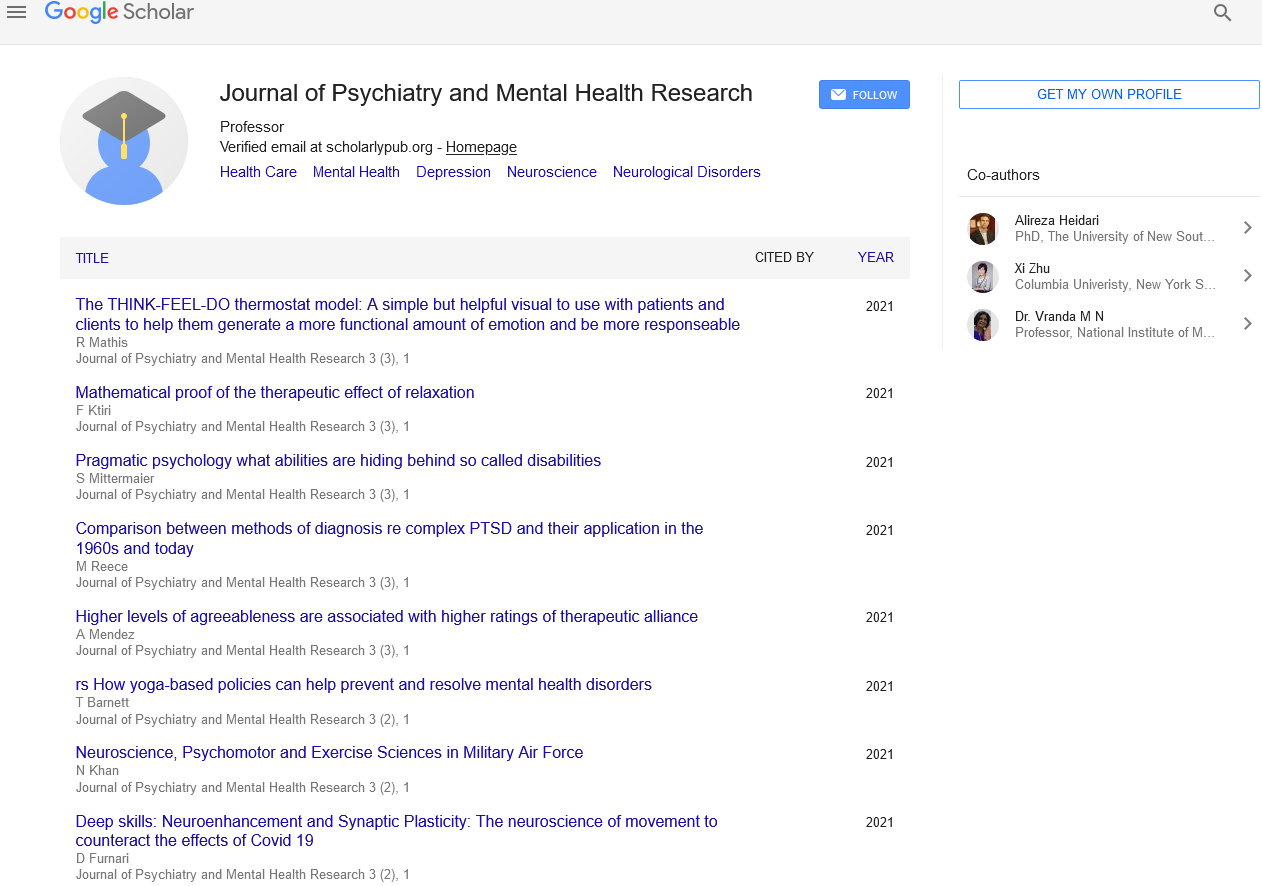
Sign up for email alert when new content gets added: Sign up
Abstract
Comparison between methods of diagnosis re complex PTSD and their application in the 1960s and today
Author(s): Margaret ReeceThe traditional model of diagnosis, based on overt symptoms is outdated and leads to many misdiagnoses, inaccurate treatment and potentially ruined lives. Medical advances in the last 5-10 years relating to the diagnosis of C-posttraumatic stress disorder, using physical evidence by means of imaging and biofeedback would revolutionize diagnoses, but it will be in vain unless: 1. The knowledge is made available to health professionals at all levels. 2. The treatment is made accessible to the masses, not just the select few, who can afford it. To integrate personal and professional perspectives relating to diagnoses and treatments of C-PTSD in the 1960s and today. No predictable adult attachment figure in my childhood to provide the necessary nurture needed for me to develop healthy life-coping strategies led to cumulative trauma. At age 19, I shut down, could feel no emotion other than fear and was incapable of rational thought. I was hospitalized for 3-4 years, given inappropriate treatment and discharged to manage what I considered to be a hostile world alone. In the 1960s, the traditional DSM classification was used, based on overt symptoms. C-PTSD as a diagnosis was virtually unheard of by most professionals. Clients were guinea pigs; many lives were ruined by inappropriate treatment, some institutionalized for life. Today, DSM classification is still the main source of diagnosis. No one is exempt from trauma, albeit in varying degrees. But as each of us is unique, so are our responses. How can one method of diagnosis fit everyone? But doctors do need guidelines. There have been tremendous advances, especially in the last 5-10years, which would enable doctors to base their diagnoses on physical evidence using imaging and biofeedback. Diagnoses can be made, based on the root cause, not just overt symptoms. Conclusion: Unless this knowledge is made accessible to all professionals and the treatment made affordable to the masses, misdiagnoses and ruined lives will remain as before.




